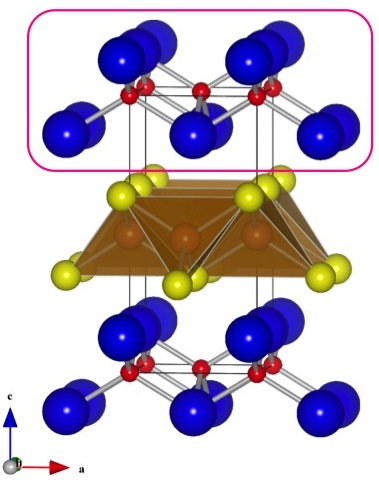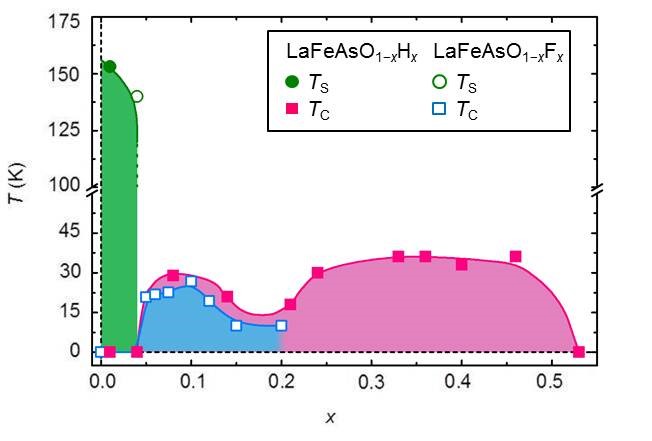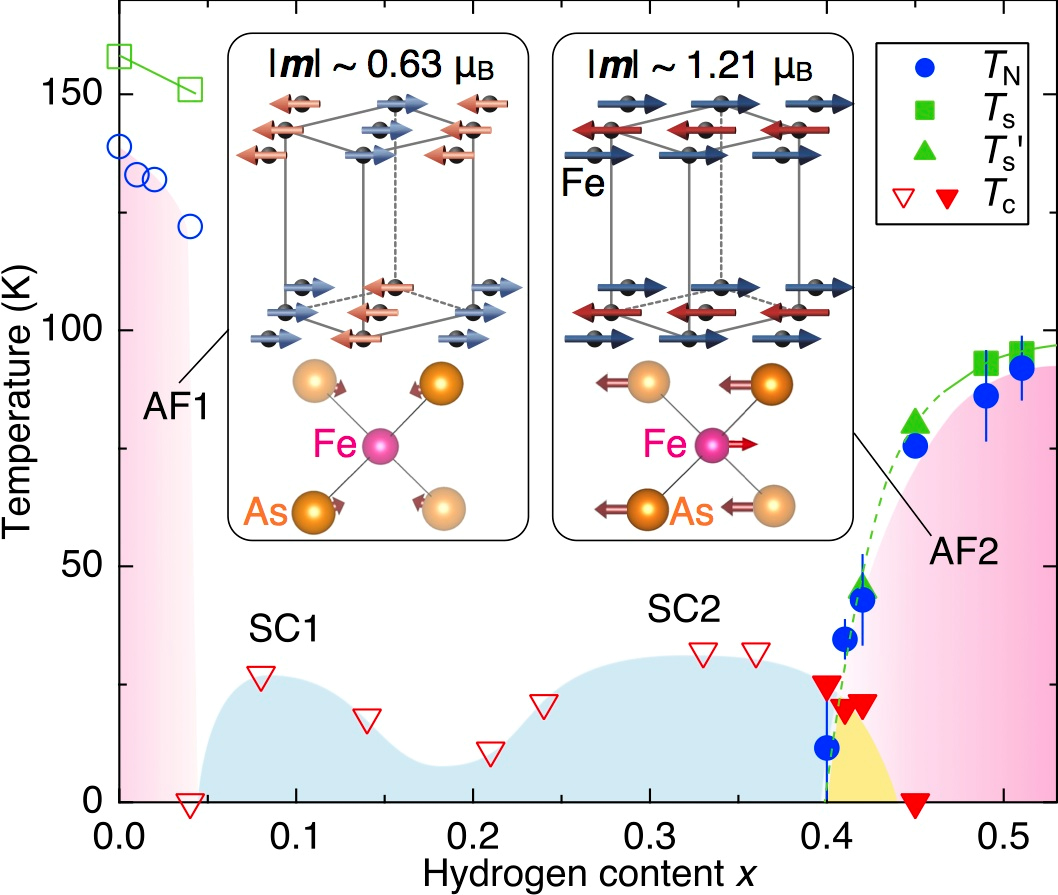Press Release
Discovery of a new magnetic ordering phase in an iron-based superconducting material
March 27, 2014
High Energy Accelerator Research Organization , KEK
J-PARC Center
Tokyo Institute of Technology
The Research Group at the Condensed Matter Research Center, Institute of Materials Structure Science, KEK, serving as a satellite organization for the MEXT project “Element Strategy Initiative for Electronic Materials,” investigated the magnetic properties and structure of the iron-based superconducting material LaFeAs(O1-xHx) using multiprobe analysis, in collaboration with Assistant Professor Soshi Iimura of the Materials and Structures Laboratory, Tokyo Institute of Technology, Professor Hideo Hosono, Director of the Materials Research Center for the Element Strategy, Tokyo Institute of Technology, and Associate Professor Satoru Matsuishi, Tokyo Institute of Technology. In result, it is found that a new magnetic ordering phase is formed by fine changes in the structure at hydrogen contents x over 0.4.
The iron-based superconducting material investigated here has a sheet-based framework (Fe2As2 layers comprising iron (Fe) and arsenic (As); Fig. 1) and shows magnetic ordering at low temperatures. Replacing some of the oxygen, which has a valence of -2 (O2-) in the RE-O block layers between the Fe2As2 layers, with fluorine, for example, which has a valence of -1 (F-), results in a supply of electrons to the Fe2As2 layers. Increasing the electron concentration leads to the disappearance of magnetic ordering and the onset of superconductivity.
Prof. Hosono’s group at the Tokyo Institute of Technology previously replaced oxygen anions in the block layer with hydrogen. They reported in 2012 that electrons can be supplied in this way at concentrations higher than previous limits and that there is a new region with a higher superconductivity transition temperature peak (~39 K) at high electron concentrations (0.2 < x < 0.5). This second superconducting phase is shown in pink in Fig. 2. This new phenomenon is receiving increasing attention, but currently it has only been found in iron-based superconducting materials.
The magnetic properties and structure at high electron concentrations were investigated using three quantum beams: muon, synchrotron radiation, and neutron beams. The muon spin rotation (μSR) results showed that when the electron concentration x was larger than about 0.4, which yields the peak superconductivity transition temperature of the second superconducting phase, a new magnetic ordering phase develops. Moreover, detailed experiments using synchrotron radiation and neutrons showed that this magnetic phase has an antiferromagnetic ordering type, unlike the host material (x = 0), and that a structural change occurs at about x = 0.5, where the magnetic transition temperature is the highest (pink region denoted AF2 on the right side of Fig. 3).
This magnetic ordering phase is adjacent to the second superconducting phase found in 2012 for this material, and it is different from the previously known magnetic ordering phase in the host material (x = 0). This means that a new host material was found, and this is expected to be an important clue for understanding new mechanisms behind superconductivity.
Publication:Nature Physics |

Fig. 1 Schematic of the crystal structure of LaFeAs(O1-xFx). Blue: lanthanum; red: oxygen; brown: iron; yellow: arsenic. The area surrounded by the rectangle is the RE–O block layer.

Fig. 2 Electronic structure phase diagram of LaFeAs(O1-xHx). ■ and □ show the superconductivity transition temperatures (TC), and ● and ○ show the structural phase transition temperatures (TS). The newly found superconductivity phase at x > 0.2 (pink region) has a higher TC compared to the superconductive phase at 0.05 < x < 0.2 (blue region). The green region at x < 0.05 is a magnetic phase that is reached through a structural transition (Iimura et al., Nature Comm. 3, 943 (2012)).

Fig. 3 Electronic structure phase diagram of LaFeAs(O1-xHx). The newly found second magnetic ordering phase (AF2) at hydrogen contents over 0.4 is adjacent to the second superconducting region (SC2). ● shows the magnetic transition temperatures (TN) determined using μSR and neutron diffraction, and ■ and ▲ are the structural transition temperatures (TS and TS') determined from the synchrotron radiation results. The center-top panel of the figure is the magnetic structure determined by neutron diffraction. The magnetic phase in the host material at x = 0 (AF1) is shown in the top left panel, and the top right panel shows the newly found magnetic phase (AF2). The arrows indicate the directions of the magnetic moments of iron in the Fe2As2 layers. The bottom panel shows schematics of the directions and magnitudes of the changes in the atomic positions of iron and arsenic in the structural transition.
Media Contact
[ For Public Relations ]
Saeko Okada
Senior Press Officer, Public Relations Office, KEK
TEL: +81‐29‐879‐6046
FAX: +81‐29‐879‐6049
E-mail: press@kek.jp
Shinichi Sakamoto
Public Relations Section leader, J-PARC Center
TEL : +81‐29‐284‐3587
E-Mail:shinichi.sakamoto@j-parc.jp
Center for Public Affairs and Communications, Tokyo Institute of Technology
TEL: +81‐3‐5734‐2975
FAX: +81‐3‐5734‐3661
E-mail: media@jim.titech.ac.jp